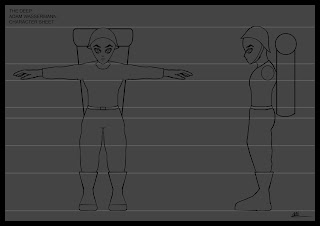Stage 1-Mood Board
For this project we had to choose an object to recreate as a high res asset, which could be used in a triple A game. As seen above I gather images of my chosen object and organized it into a mood board. From here I could start to model from my chosen reference image. The reason behind my chose is because out off all the antic objects I found this gun caught my eye; because of it's elegant structure with the well designed engraved pattern on the side. Plus its beautiful pearl textured handle.
Then I started to develop my high poly model and create a detailed version of my chosen object in Maya 2016. As I model this I begin to establish which parts would be moveable or should be individual pieces such as the gun's barrel. After completing the modeling I then smooth out each piece ready for ZBrush.
Stage 3-Into ZBrush
After completing my high poly model I then exported each of the individual parts as OBJ file and then I imported each part into ZBrush. Which lead me to use the Sub Tool to have all parts in one place, I did have to use the move tool to a line or place certain objects into their correct places. After that I was able to use some alphas that I made in Photoshp to give my gun its engraved quality as well as its screws depth. I then poly painted the handles grip so when I later bake and add textures onto my model the peal texture can be kept on the area marked red, so far I am happy with its outcome.
Stage 4-Low Polygon Model
After completing my asset in ZBrush I then moved on to reproducing the asset as a low polygon model. So that later on I could bake on my details made in ZBrush to the low poly model. It was quite hard to recreate my model again but in low poly, however I defiantly managed to achieve it.
Stage 5-UV Unwrapping
Soon after I made my low polygon model I then UV unwrapped it which would prevent textures being stretched and to keep them place in the right place. This area was quite difficult and a bit fiddly, even with the new tools in Maya 16. But I was able to unwrap the UV map within a neat layout.
Stage 6-xNormal
Then I moved on to xNormal which is a tool software to bake details from my high poly model to my low poly model. I needed to bake three different maps the first one was a normal map then a colour map and finally a cavity map.
Stage 7-Quixel DDO
With the maps baked and saved I moved on to Quixel, an add on software to Photoshop, which can add the maps to a render form of my model as well as attaching materials and textures.
Stage 8-Quixel 3DO
The following screenshots are of my model which is fully rendered in Quixel 3DO. This allows me to see what it would look like and to also see how some effects might affect it such as lights, shadows and lines filters. There were also options to allow me to mess with the contrast and saturation as well as other adjustment affects. When I was happy with the way it looked I then exported the maps and model from Quixel into a folder for the final stage.
Stage 9-Unreal 4
Finally I once I was down in Quixel, I then moved on to Unreal 4 for my final rendered submission. I achieved this by importing my exported model and maps into Unreal 4. Then I made a new material which with a material window I was able to link my exported map such as the normal map, albedo map and the reflection map. Then I applied the changes to the material and then placed the new material on the model. Once I was happy with its position in the world, I moved on to building a scene to see the effect it would have on my gun. After that I then clicked build so it would build the correct lighting for the scene and my triple A asset. After this I saved the scene and made a build of my level for submission. Overall the process was interesting but I enjoyed the new skills I learnt as well as the final outcome of my model.



















































